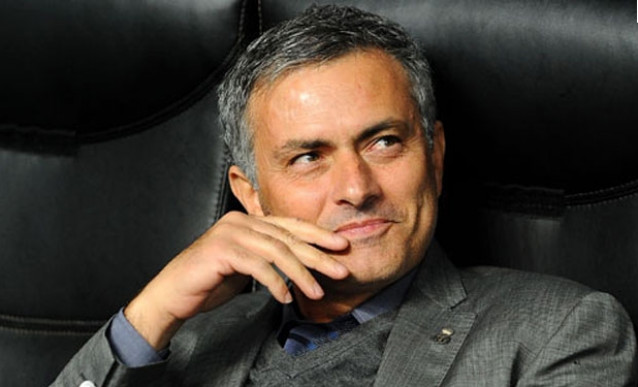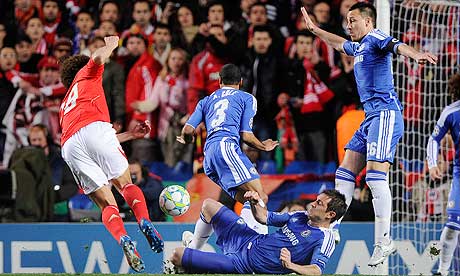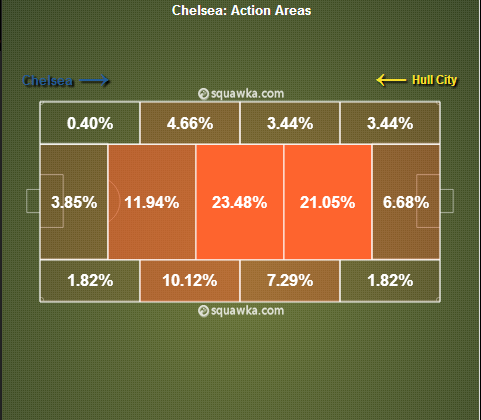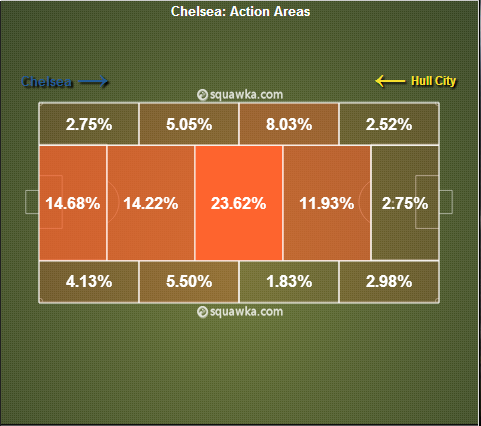So one of the things you'll find during the football season is that we will often shorthand certain tactical concepts, and then quickly move along, expecting the readers to either pick up the gist of what we were saying, or to look up the concept itself for further clarification. The problem is... some of this stuff isn't particularly well defined. Thus when one of our analytical authors makes a reference to a concept like "game states" or the like, it's going to be useful to have a reference article to link to.
Leaving intelligent readers behind is a bad thing, mmkay? Ben's working on the Game States introductory piece, but today I get... Defensive Shells.
What is a Defensive Shell?
A defensive shell is a tactical concept that refers when a team largely relinquishes their attacking intent and focuses on protecting the goal. (Also known as turtling.) Teams often do this after taking the lead in a match.
But why? Why change your style of play after your team has already shown the ability to score a goal?
Obviously there are a number of reasons for this behavior (or else I wouldn't have asked the rhetorical question), the first of which comes from solidifying a lead. You just scored a goal and you want to make sure you don't give the lead back right away, so you take some of the guys who were further up the pitch and locate them closer to the goal. You lose a bit of adventure in style of play, but you exchange it for an increased number of dedicated defenders. Shelling (or packing it in, or parking the bus) is generally considered the tactical choice that is least likely to yield goals to the opposition. (Note: we don't have analytical proof of this, we just have common wisdom for now.)
Another big reason teams will settle into a defensive shell is to draw the opposition further away from their own goal. Look, it is hard even for good teams to get through opposing teams that are parking the bus. It is even more difficult to make teams who have parked in front of goal leave that spot unless they have a very good reason. Chasing the game when down a goal is a good enough reason for most teams to at least think about attacking a little bit.
By giving away some possession and retreating into their own half - especially when knowing the other team has to score in order to tie the game - clever teams create better situations in which to counterattack.
But isn't that dangerous? The answer: Not if you are good at it. In fact, in many cases it is hugely rewarding to do so.
The reason for shelling comes because counterattacking is one of the best ways to create better chances(link). It provides a situation where your attackers are going up against a limited number of defenders, who are also on the move. And we know from a reasonably large sample of statistics that it's far easier to score in these situations than going up against an entrenched defense. Thus creating these situations to exploit has a huge benefit.
That's not to say that it's not at least a little bit dangerous. By going into a shell, it lets the opposing team have possession of the ball and take more shots than they would get naturally. This means that even if you are doing a good job defensively, the opposition has a chance to get lucky via deflections, etc, and your team has more of a chance to screw up closer to goal. On the other hand, they should have more teammates around to help out if they screw up too.
Example Chelsea
Historically, Jose Mourinho's teams have been some of the best in the world at shelling and then using lightning counter-attacks the moment the opportunity arises. Two years ago, Chelsea (without Mourinho), were absolute masters at doing this and rode the tactic through superior opposition to win the Champions' League.\
However, last season they were not very good at it. Ben looked at this in detail over at We Ain't Got No History (link), and Chelsea were by far the worst of the top teams at getting a lead and then sitting on it. Mourinho obviously thinks shelling is important, so what happened in Chelsea's first game of the season against Hull was fascinating.
In the first half, CFC were utterly dominant, in a way that they rarely were last year. They passing and movement was incredibly quick and crisp. They outshot Hull 18-2 in the first 45. Let me say that again. Chelsea outshot a Premier League team 18-2 over 45 minutes. Mind. Blown.
In addition to the two goals they scored, they also missed a penalty and should have had another one when Ivanovic was clearly shoved off the ball in the box. The Action Areas image from Squawka looked like this:
Then in the second half, everything changed. Hull were suddenly ascendant. They tied Chelsea in shots for the half (5-5), and actually had 46 more passes than the home team. The Action Areas image completely flipped, and Hull basically had the same territorial profile as Chelsea in the first half.
What happened? Did Hull start playing much better? Did Chelsea's players get tired and allow Hull to take over?
Obviously not. Chelsea used the second half as defensive practice. Already up 2-0 (practically an insurmountable lead even against good teams, which Hull are not), and knowing that his team wasn't very good at protecting leads last year, Mourinho probably told his team they were only allowed to shell and then try to score on counters. Thus you see them sitting back deep in their own half, making sure Hull don't get good shots, and then occasionally running really fast to the other end to attack.
And they did pretty well. Compared to the crazy pace of the first half, Chelsea slowed the game to mud for both sides, only allowing five total shots, 3 of which came from long range. Hull did manage to get off two shots in the box, one of which was blocked (and Chelsea were masters of the block during their CL run), and one of which Cech had to save.
In other words, Grand Moff Mourinho was testing the new Chelsea 2.0 class of Star Destroyer against Hull. For the first half of the test, he unloaded all the offensive weaponry at his disposal. For the second half, they shut down the big weapons and tested out the shields and countermeasures. Depending on your fan affiliation, you are either filled with gleeful delight or sheer terror at the prospect of what the Star Destroyer will do once it is fully operational.
Conclusion
So there you have it, the defensive shell. It's used as a tactical tool to protect leads/defend the goal, but also to allow the team employing it to get more counter-attack chances. If a dominant team in a game scores a goal or two, and then suddenly seems to be under siege, this is probably why.
This is also why some of us view game state data as fairly important in sussing out what was actually happening in a match. If there are other concepts we use in articles but you guys don't really understand, please tell us that you would like explanatory articles in the comments. We're often really excited by new research or insight and not always aware of what needs better explanation.
--TK
Betting Post Script
Oh my God, does this behavior suck if you are a bettor. How long are Chelsea going to sit on narrow leads, despite being a hugely dominant team? Back when Mourinho was at Chelsea the first time, they did this the entire season! This matters a helluva lot if you are betting either totals or large handicaps. I wish you all the best of luck!



